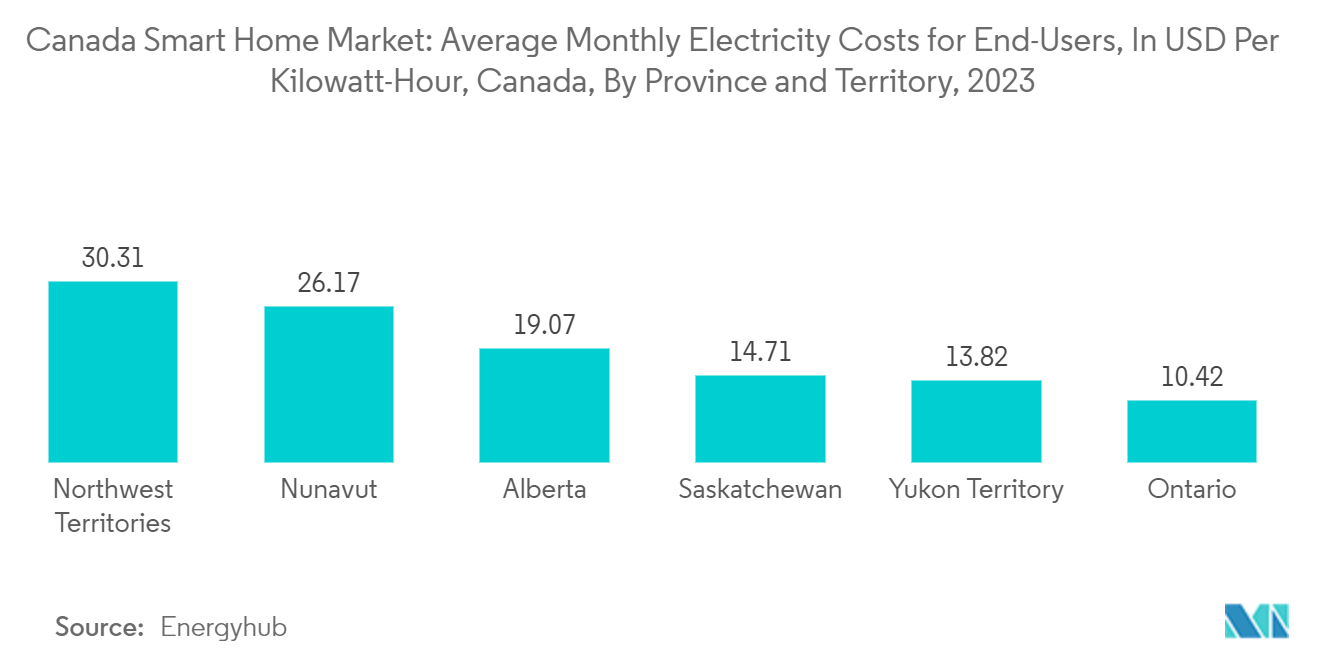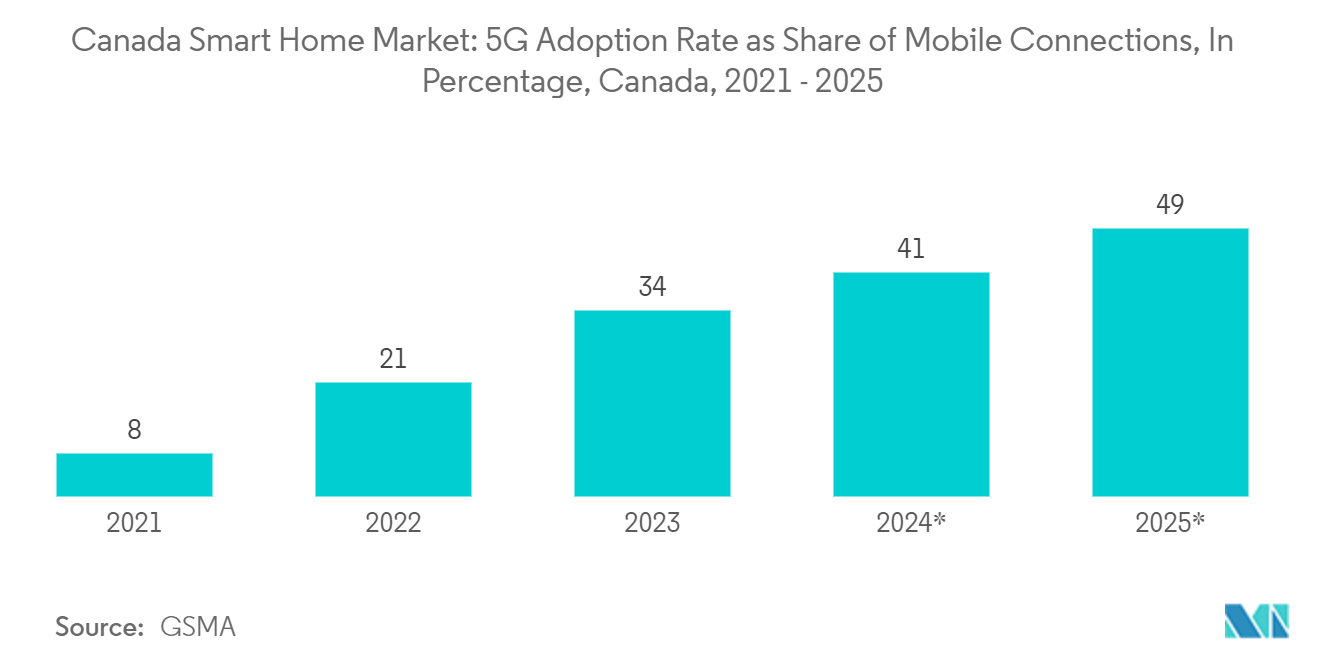Market Trends of Canada Smart Home Industry
The Energy Management Segment is Expected to Hold a Significant Share in the Market
- With the advent of the smart grid era and the development of advanced communication and information infrastructures, bidirectional communication, advanced metering infrastructure, energy storage systems, and home area networks are set to transform electricity usage and energy conservation at consumption premises. Under the sustainable smart grid paradigm, smart homes equipped with a home energy management system (HEMS) significantly enhance distribution systems' efficiency, economics, reliability, and energy conservation.
- Further, Canadian consumers increasingly recognize the significance of curbing energy consumption and reducing carbon footprint. Consequently, there's a surging demand for smart home technologies like smart thermostats, plugs, and energy monitoring systems. These technologies empower homeowners to fine-tune their energy usage, ultimately aiming to slash utility costs.
- The government of Canada has rolled out a range of incentive programs and policies to boost the uptake of energy-efficient technologies, notably smart home solutions. For instance, many provinces provide rebates and tax credits, incentivizing the installation of smart thermostats and energy management devices, thereby catalyzing consumer interest.
- Canadian electricity prices have surged in recent years, straining household budgets. Smart home energy management products empower homeowners by offering precise energy monitoring and control, leading to tangible reductions in both consumption and costs. According to Energyhub, as of September 2023, the average electricity cost for end users in Canada stood at 19.2 Canadian cents per kilowatt-hour, showcasing regional disparities.

Increasing Inclination Toward Enhancing the Quality of Life is Driving the Market's Growth
- As the cost of living rises, Canadian homeowners increasingly seek affordable smart home solutions. Consequently, there has been a surge in the demand for smart home products and services. The widespread adoption of smartphones, coupled with the availability of high-speed internet, has significantly propelled the growth of smart home technology. Smartphones are the central control hub for many home automation systems, enabling users to monitor and manage various aspects of their homes remotely.
- In addition, consumer interest in adopting 5G in smartphones to avail elevated network performance to cater to high-performing video streaming accelerates the increasing penetration of smartphones in Canada, facilitating the seamless adoption of smart home automation. According to GSMA, mobile connections' 5G adoption rate is expected to increase to 49% by 2025.
- IoT devices with sensors and connectivity features establish seamless communication among themselves and homeowners, fostering a cohesive smart home ecosystem. This network empowers homeowners in Canada to manage lighting, temperature, security, and entertainment systems, enhancing their daily comfort and convenience. For instance, smart thermostats are crafted to monitor and fine-tune home temperatures, balancing comfort and energy savings.
- Smart home technology enhances convenience and comfort, granting homeowners unparalleled control over their living spaces. Through a centralized interface or simple voice commands, users effortlessly adjust settings and automate tasks.
- For instance, they can remotely illuminate their homes, tweak the temperature, or activate appliances such as coffee makers or air purifiers before entering the door. Such seamless control saves time and elevates daily comfort and efficiency.


